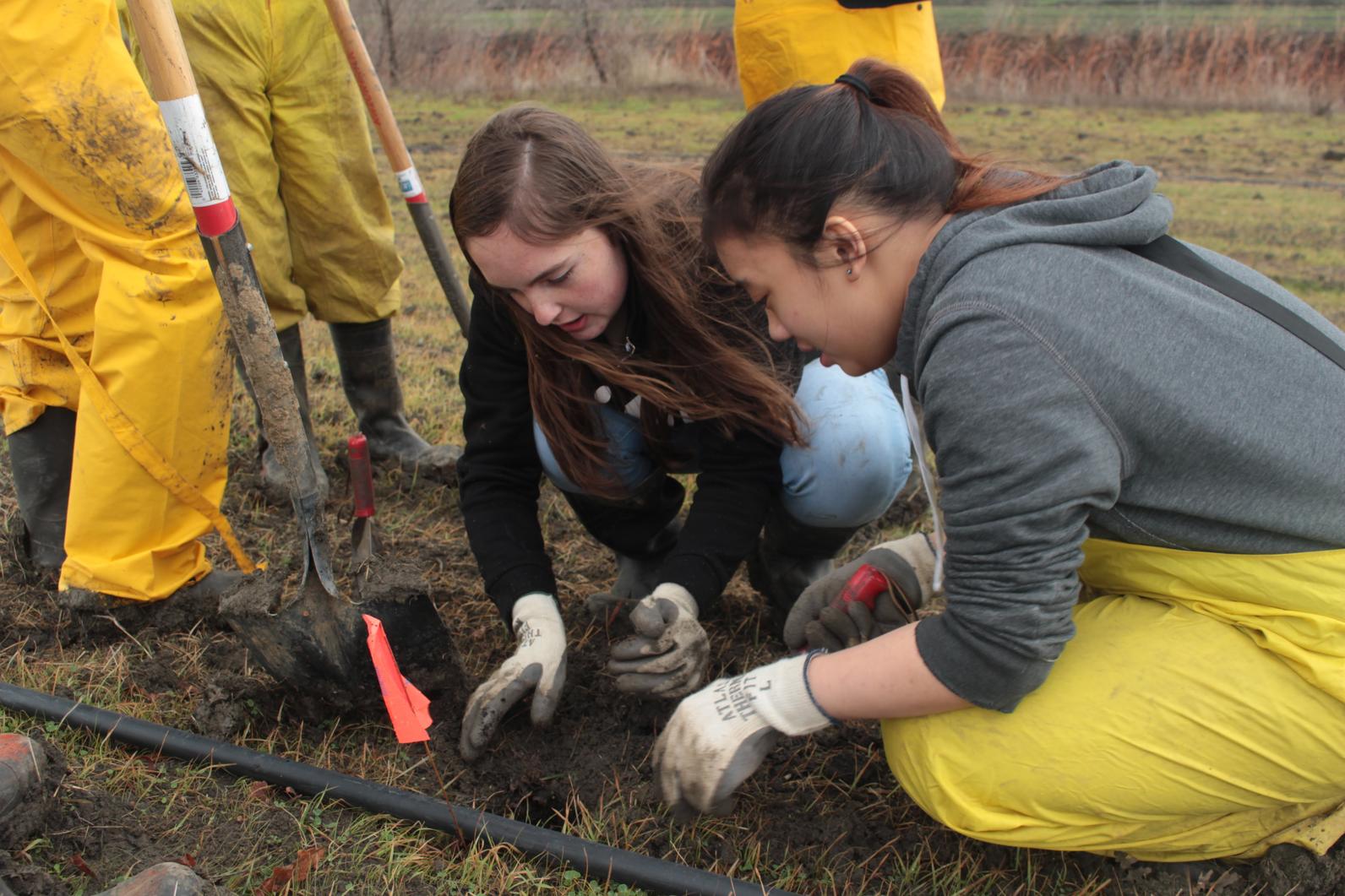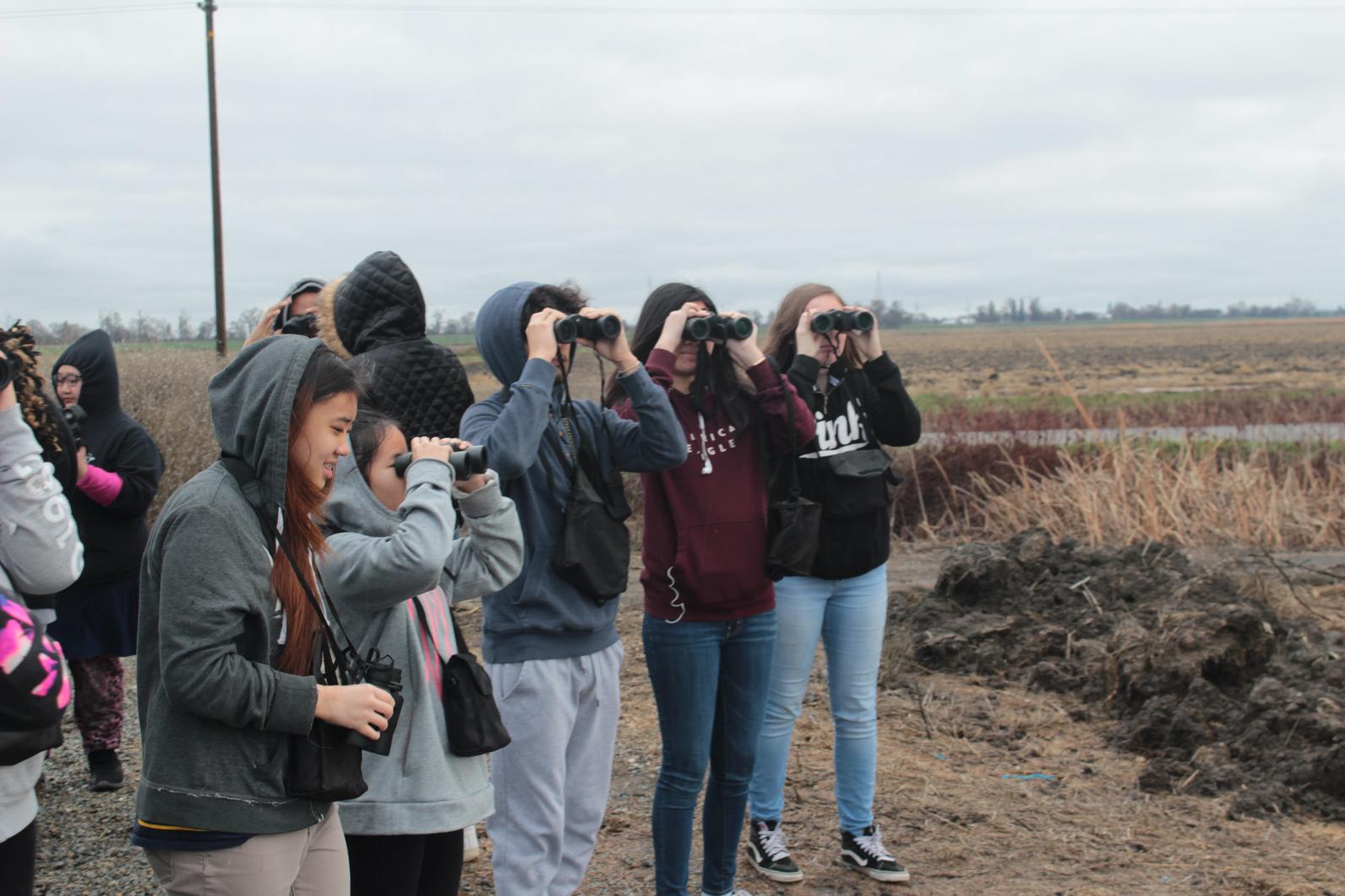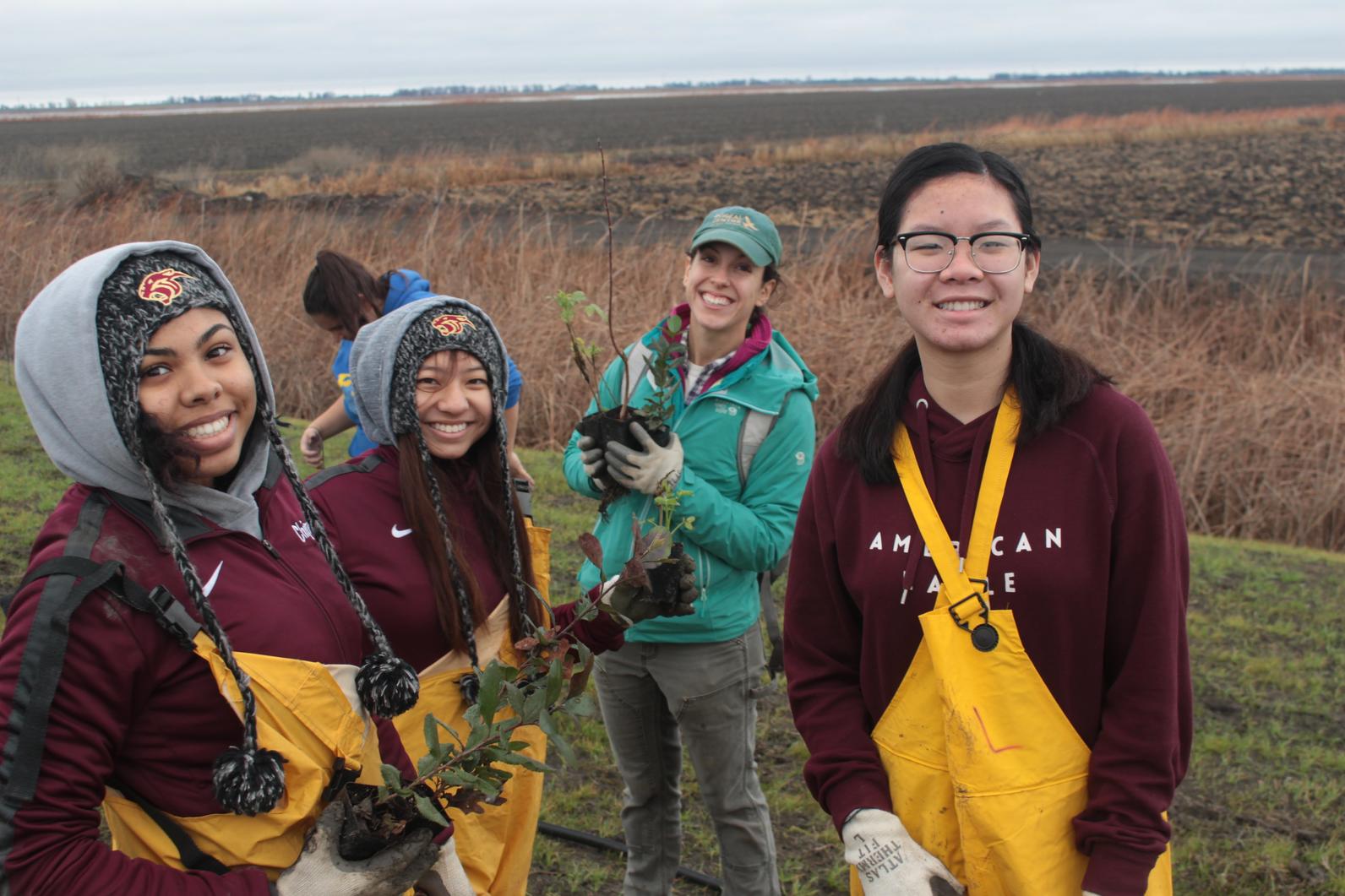
Did you know that Native Americans used Coyote Brush (Baccharis pilularis) to create poultices to reduce swelling? High school students from Florin High School Future Farmers of America (FFA) program do. They learned that and more about native plants, including how to identify them on a recent day at River Garden Farms.
The students were at the farm as part of an ongoing partnership between Audubon California, River Garden Farms, U.S. Fish and Wildlife Service and SLEWS (Students and Landowner Education and Watershed Stewardship). After starting the day with the native plant activity, they planted hundreds of native plants with the help of graduate students mentors from UC Davis and Audubon staff along the lines of irrigation tubing that were laid out on the first SLEWS Day in October.
In the afternoon, after a yummy burrito lunch, they visited a field that is being flooded to create fish food and students got to use binoculars and a spotting scope to look at the birds that were also using the field. Khara Strum from Audubon’s Working Lands program was on hand to help point out birds and identify them. Although it rained for two days before the field day, we had a rain-free, albeit muddy, and fun day.
This SLEWS day was part of the 2nd phase of a project that will connect the oak forest at Eldorado Bend to restored habitat at Roosevelt Ranch. When all is said and done, SLEWS will have helped install 2.5 miles of new habitat. Through a series of field days, Audubon California’s partnership with SLEWS helps our ongoing work with River Garden Farms to increase conservation on their land and to use the farm as a model for surrounding landowners as an example of conservation in agriculture. Through this partnership we get the on-the-ground help needed to install native plants and the students get to learn about where their food comes from and how conservation and agriculture can work together.

This habitat also helps Audubon reach our own goals of engaging with partners, policymakers and other farmers to show them an example of enhanced bird habitat on farmland and demonstrate the value of working lands to providing bird habitat.

The SLEWS program (Students and Landowner Education and Watershed Stewardship) is based at the Center for Land-Based Learning, a long-time partner of Audubon’s. The program engages regional high school students and teachers in meaningful environmental stewardship to practice scientific skills, learn from natural resource professionals, and expand on classroom concepts, while accomplishing real habitat restoration projects on farms, ranches and open spaces
Learn more about our partnership with River Garden Farms in this blog post from last year: http://ca.audubon.org/news/farming-birds-river-garden-farms
By Rachelle House
Support Bobcat Ranch
Your gift supports our work to develop & promote bird-friendly cattle ranching practices in CA and to protect and restore native grassland habitat for birds.




